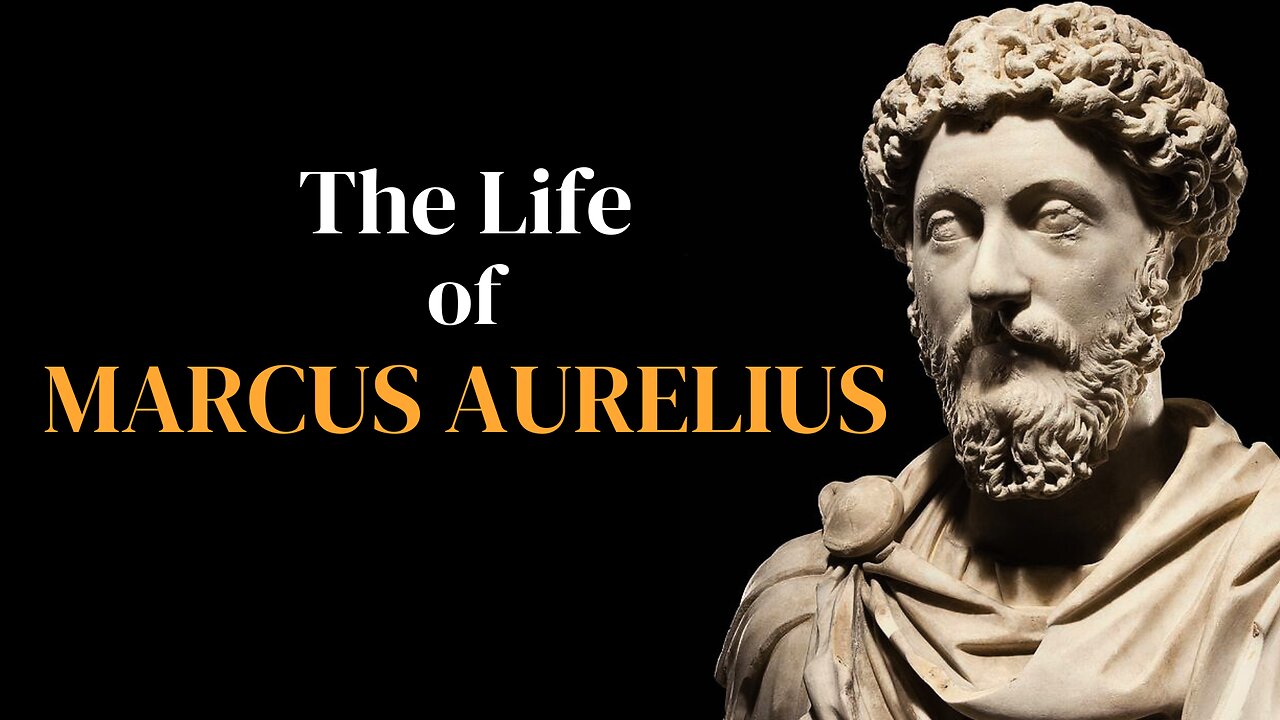Premium Only Content

War, Plague, Opium and Stoicism: The Life of Roman Emperor Marcus Aurelius
War, Plague, Opium and Stoicism: The Life of Roman Emperor Marcus Aurelius – This is the story of one of the most iconic characters in human history, the Roman Emperor, Marcus Aurelius. This video will detail the major episodes in Aurelius’ life, from being adopted twice when he was a boy to going on to become the ruler of the Roman Empire. When he ruled Rome, Aurelius was faced with numerous challenges, from the brutal Macromannic wars to the pernicious Antonine plague.
On a personal front, Aurelius struggled for years with an opium addiction, with there being at least one attempt where Aurelius tried but failed to stop using opium. Today, Aurelius is perhaps best known as one of the main intellectual figures of stoicism, a philosophical branch that emphasises virtue, rationality, control over one’s emotions and living in accordance with nature.
Sources Consulted:
Africa, T. (1961) ‘The Opium Addiction of Marcus Aurelius,’ Journal of the History of Ideas, 22:1, 97-102.
Aurelius, M., Hammond, M., and Clay, D. (2006) Meditations (London: Penguin Books).
Beard, M. (2015) SPQR: A History of Ancient Rome (London: Profile Books).
Gilliam, J. (1961) ‘The Plague under Marcus Aurelius,’ The American Journal of Philology, 82:3, 225-251.
Potter, D. (2013) The Emperors of Rome: The Story of Imperial Rome from Julius Caesar to the Last Emperor (London: Quercus Editions Ltd).
Sellars, J. (2002) Marcus Aurelius (121—180 C.E.), Internet Encyclopedia of Philosophy - https://www.iep.utm.edu/marcus/.
The Stanford Encyclopedia of Philosophy (2017) ‘Marcus Aurelius’ - https://plato.stanford.edu/entries/ma....
Note: The sources consulted for this video do not necessarily endorse the narrative constructed.
Creative Commons Imagery:
Unguided Nations - https://bit.ly/2L5vKny
Drone Tales https://bit.ly/2Jpfuua
Tataryn https://bit.ly/2lAd6IV Creative Commons Attribution-Share Alike 3.0 Unported https://bit.ly/1kvyKWi
Marie-Lan Nguyen https://bit.ly/2lyQ6tI
Guillaume Rouille https://bit.ly/2k1mEMu
Cesare Maccari https://bit.ly/1IEsUeW
Bibi Saint-Pol https://bit.ly/2kwoMfx
PierreSelim https://bit.ly/2kwoRjl CC0 1.0 Universal Public Domain Dedication https://bit.ly/1PKFaP7
Carole Raddato https://bit.ly/2lweo7D Creative Commons Attribution-Share Alike 2.0 Generic https://bit.ly/1dMkpTr
Carole Raddato https://bit.ly/2m1dWyx CC Attribution-Share Alike 2.0 Generic https://bit.ly/1dMkpTr
Caliniuc Creative Commons Attribution-Share Alike 4.0 International https://bit.ly/1SrbRBk
Pierre-Selim https://bit.ly/2m0k4ai Creative Commons Attribution-Share Alike 3.0 Unported https://bit.ly/1kvyKWi
Andrei N. (Wikipedia Commons user Andrein) https://bit.ly/2lwfSid Creative Commons Attribution-Share Alike 3.0 Unported https://bit.ly/1kvyKWi GNU Free Documentation License https://bit.ly/1OkIvTx
CristianChirita GNU Free Documentation License https://bit.ly/1OkIvTx Creative Commons Attribution-Share Alike 3.0 Unported https://bit.ly/2lTt68O
Marian Cepeha https://bit.ly/2lYExfv
Barosaurus Lentus https://bit.ly/2tCxJTG Creative Commons Attribution 3.0 Unported https://bit.ly/1DwRqQf
Jebulon https://bit.ly/2k0fNmr
Georg Paul Busch The Lancet https://bit.ly/2GvNYvG
Eugène Delacroix https://bit.ly/2k0gkVt
I, Sailko https://bit.ly/2lAayua GNU Free Documentation License https://bit.ly/1OkIvTx Creative Commons Attribution-Share Alike 3.0 Unported https://bit.ly/1kvyKWi
Marie-Lan Nguyen (2006) https://bit.ly/2lB7cqP
Titlepage of an 1811 edition of Meditations by Marcus Aurelius Antoninus, translated by R. Graves Private Collection of S. Whitehead https://bit.ly/2ktqY7m
-
 9:49
9:49
Tundra Tactical
15 hours ago $26.55 earnedThe Best Tundra Clips from 2024 Part 1.
154K11 -
 1:05:19
1:05:19
Sarah Westall
15 hours agoDying to Be Thin: Ozempic & Obesity, Shedding Massive Weight Safely Using GLP-1 Receptors, Dr. Kazer
127K35 -
 54:38
54:38
LFA TV
1 day agoThe Resistance Is Gone | Trumpet Daily 12.26.24 7PM EST
86.2K13 -
 58:14
58:14
theDaily302
1 day agoThe Daily 302- Tim Ballard
79.8K14 -
 13:22
13:22
Stephen Gardner
18 hours ago🔥You'll NEVER Believe what Trump wants NOW!!
127K353 -
 54:56
54:56
Digital Social Hour
2 days ago $13.96 earnedDOGE, Deep State, Drones & Charlie Kirk | Donald Trump Jr.
73.5K8 -
 DVR
DVR
The Trish Regan Show
19 hours agoTrump‘s FCC Targets Disney CEO Bob Iger Over ABC News Alleged Misconduct
76.6K45 -
 1:48:19
1:48:19
The Quartering
20 hours agoElon Calls White People Dumb, Vivek Calls American's Lazy & Why Modern Christmas Movies Suck!
156K118 -
 2:08:42
2:08:42
The Dilley Show
21 hours ago $38.31 earnedH1B Visa Debate, Culture and More! w/Author Brenden Dilley 12/26/2024
132K44 -
 4:55:59
4:55:59
LumpyPotatoX2
23 hours agoThirsty Thursday on BOX Day - #RumbleGaming
117K9